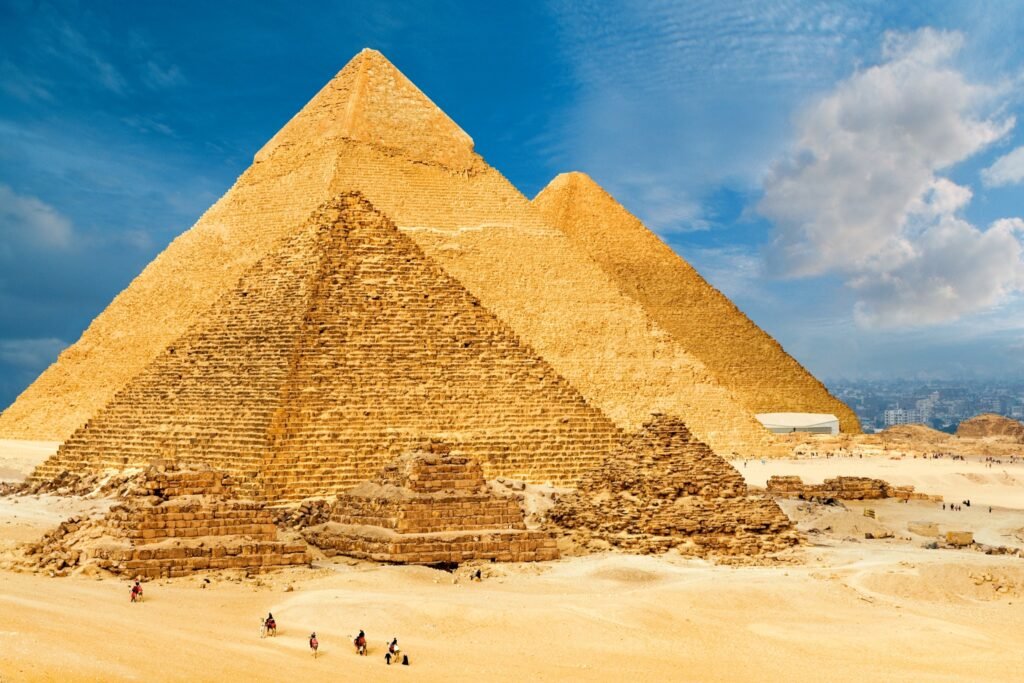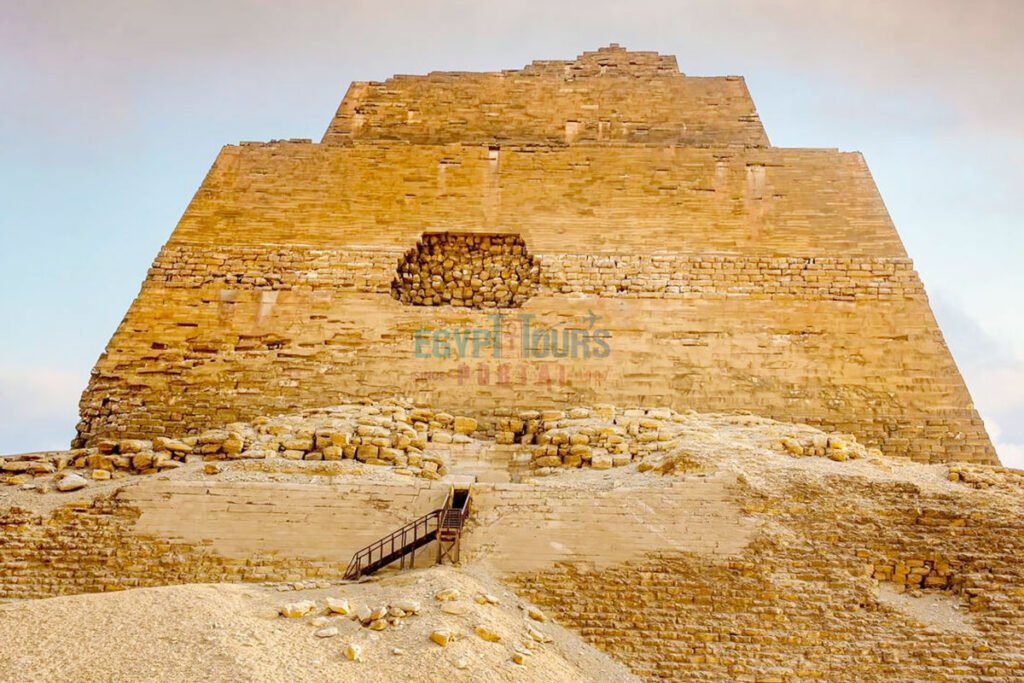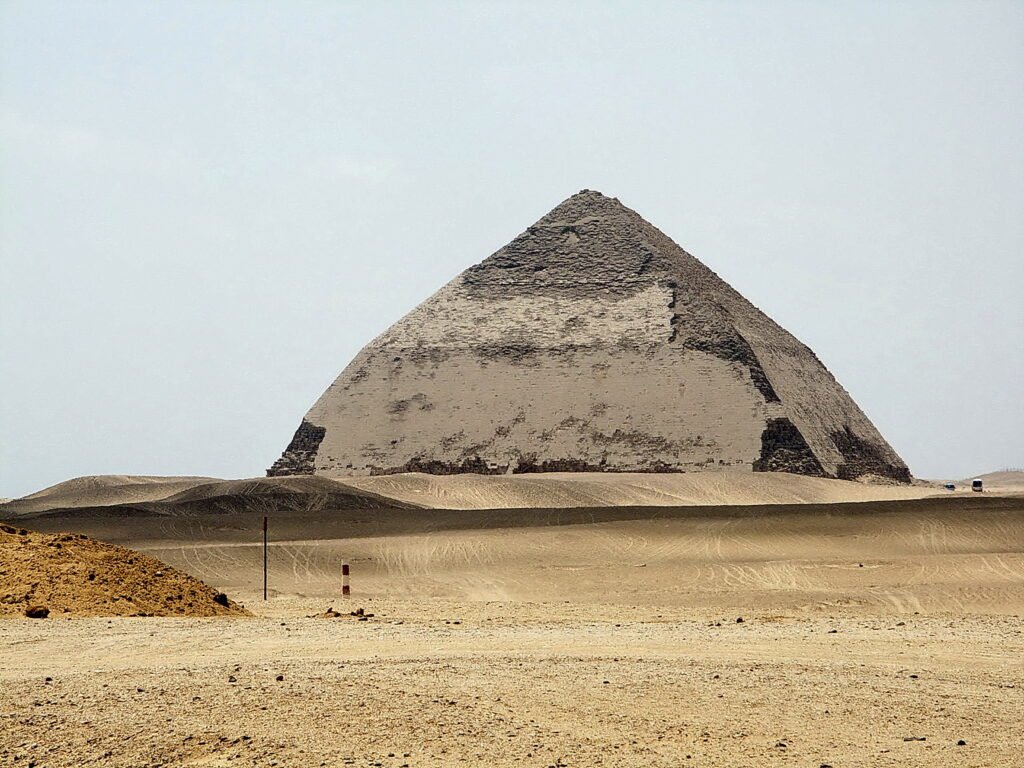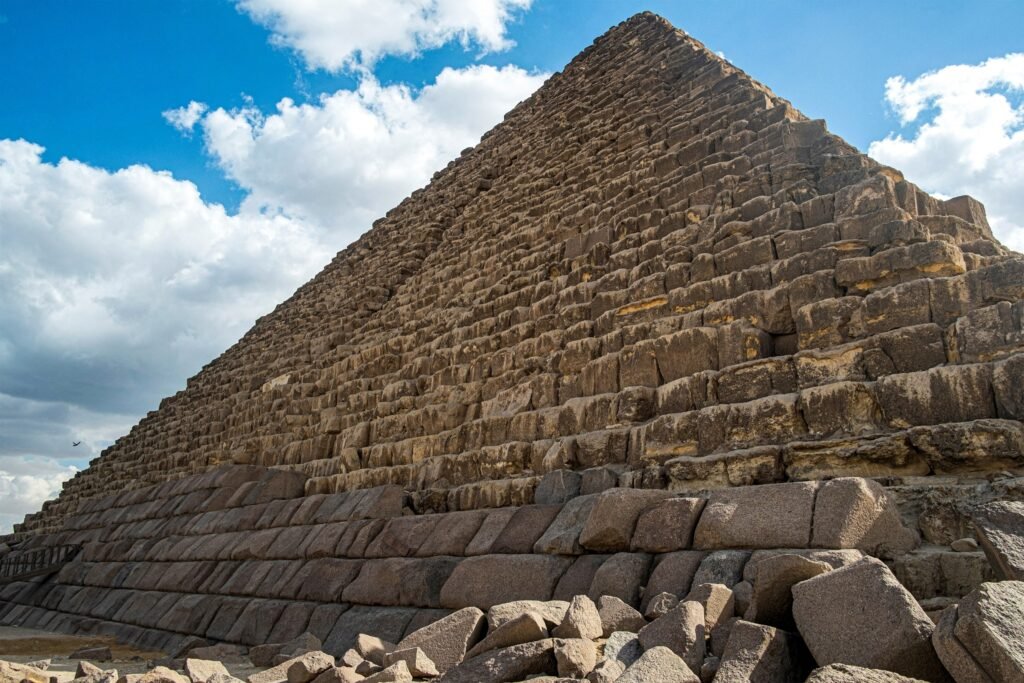The architectural journey of ancient Egypt’s iconic pyramids began with King Sneferu of the Fourth Dynasty (2686–2667 BC), whose reign marks a turning point in the art of pyramid building. Known as a visionary, Sneferu’s pursuit of the perfect pyramid shape led him to construct three pyramids, each contributing invaluable lessons to Egyptian architectural techniques and setting the stage for the iconic structures at Giza.

The Pyramid at Meidum: A Bold but Flawed Beginning
Sneferu’s first pyramid project began at Meidum and was initially designed as a step pyramid. As construction progressed, Sneferu’s architects modified it in an attempt to create the first ‘true’ pyramid with smooth sides. Unfortunately, the structure proved unstable, and its limestone blocks started to slip, ultimately leading to its abandonment.

The Bent Pyramid: A Creative Solution to Structural Challenges
Following the Meidum pyramid’s failure, Sneferu commissioned a second pyramid at Dahshur, now famously known as the ‘Bent Pyramid.’ This pyramid was initially planned as a true pyramid, but structural issues emerged due to its foundation being on unstable ground, which caused cracking within the burial chambers. To preserve the structure, the pyramid’s upper sections were built at a shallower angle, giving it a unique “bent” appearance.

The Red Pyramid: Egypt’s First True Pyramid
Refusing to be defeated by previous setbacks, Sneferu set out to build a third pyramid at Dahshur, just a mile from the Bent Pyramid. Known today as the Red Pyramid due to its red limestone blocks, this structure became Egypt’s first successful true pyramid. With carefully engineered burial chambers, a mortuary temple, and a causeway leading to a valley temple, the Red Pyramid achieved Sneferu’s vision of stability and elegance.

The Great Pyramid of Giza: A Marvel of Ancient Engineering
The Great Pyramid, built by Khufu, is an engineering marvel that took two decades to complete. While often mythologized as a slave-driven project, historical evidence suggests otherwise. Approximately 100,000 Egyptians worked seasonally on this project, receiving sustenance and clothing from the pharaoh. Their labor created a structure that continues to inspire awe today.

Khufu’s son, Khafre, contributed his own pyramid at Giza, which appears taller than his father’s, a perception caused by its elevated foundation. Khafre’s son, Menkaura, added the third pyramid at Giza, less than half the height of Khufu’s, but adorned with a unique combination of red granite and white limestone.




